Tropical fruit - Frutta tropicale [ENG/ITA] (1 of 2)
ENGLISH
Hello everyone, my first post on reptiles in Panama, born by chance, reminded me how lucky I am to live every day in a natural science documentary.
Just look at the window of my kitchen and I can see a live world full of colours, sounds and smells.
Panamanians are very proud of their country and think it is blessed by God: how to blame them when the name itself means abundance and the favorable climatic conditions combined with the strategic geographical position creates a biodiversity like few others in the world.
So I will try to make you discover part of it, through articles that will tell mainly what I saw and experienced personally in these 8 years of life in Panama.
This post, in particular, is dedicated to tropical fruits: some will be new for you, some other already known, but I will point out several peculiarities that maybe escape you. Let's start from the most famous.
Just a clear but dutiful premise: all the fruit is much tastier if eaten on site! This, for those who visit a tropical country for the first time, is a real surprise: almost everything, even the fruit we know, such as pineapples and bananas, has a better taste for us that we come from other latitudes.
We often realize later to like some exotic fruit, that we have eaten at home imported from abroad and we have found it disgusting or tasteless. I remember, for example, that I tasted passion fruit in Italy, imported from who knows where and having found it very bad. Instead, eaten in the countries where it comes from, it really has another flavor.
Pineapple
Called piña in Spanish, because it resembles the conifer pine cones especially during the inflorescence, pineapple is one of the most cultivated, exported and consumed fruits. What many do not know is its plant: low, with narrow and elongated leaves spirally arranged, the fruit develops at the center of it.
Normally the first harvest is obtained after 2 years and the following after 12 months and always only one pineapple at a time!
Regarding the reproduction of these species, a new plant can emerge from the mother plant, or it is better to transplant the typical tuft on the top of the pineapple.
Banana
Although most people in the world know only one type of banana, there are actually dozens of different varieties, in shape, taste and color.
Here it is generally called "guineo".
The plant looks like a tree but in fact it is not. Instead of the classic trunk, it has a pseudostem that, depending on the breed and the fertility of the soil, can reach a height of seven meters.
Upon reaching the maturity of the plant, a large inflorescence grow from the center of it in place of the umpteenth leaf; opening up he discovers rows of female flowers that will become fruits and, only at the end, male flowers.
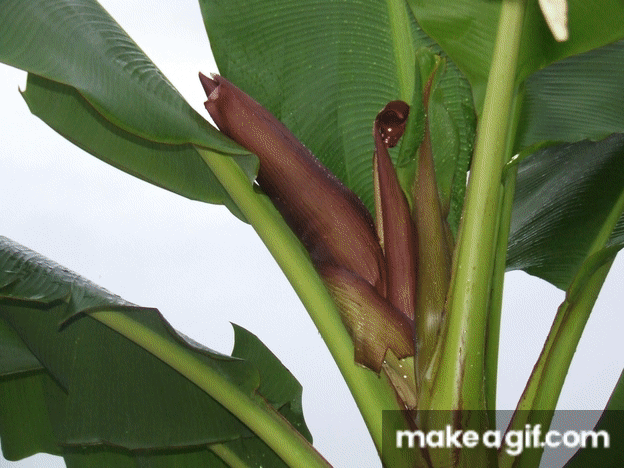
Each stem (pseudo) generates just one time and then dies, but the rhizome continues to give life to side "sons".
Among the most curious and tasty types there is one that Panamanians identify as primitive, which produces small bananas with a thin skin and a dense, yellowish pulp. You will want to eat more and more, like candies, because of their size and sweetness.
Guineo morado, has a violet skin and is sweeter than a common banana. The guineo manzana instead has a more acidic flavor that is reminiscent of the apple, hence its name.
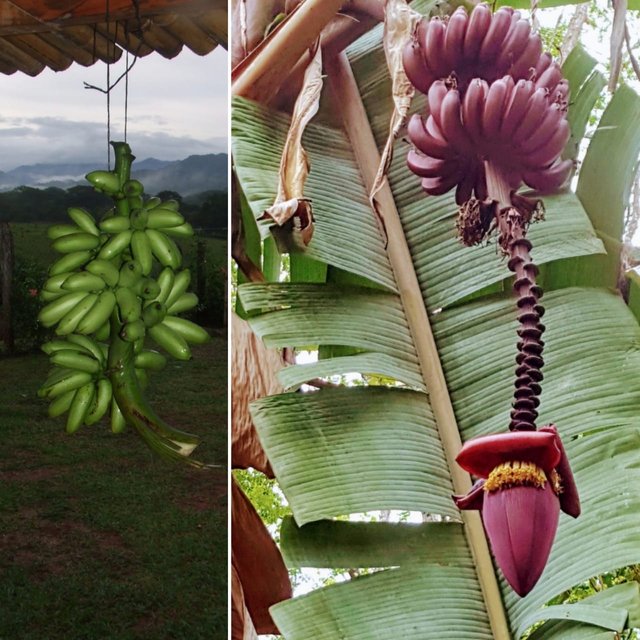
Another banana that arouses curiosity is the cuadrado, which, as the name implies, has a squat and squared shape. Unfortunately they are not easy to find, if not directly in the garden of those who still cultivate these varieties.
You will find in groceries shops and supermarkets just the only banana that is marketed by the big distribution, the Cavendish; in some kiosks along the Pan-American Highway and in the major food markets you could find some of these varieties at incredible prices.
The banana's cousin is plantain: its fruit is generally larger and is consumed predominantly green, when it has a hard and sticky pulp. Many foreigners are sceptical about its goodness, but it can be really tasty if cooked, especially fried. Locals prepare it cutting 4-5 cm thick pieces that are then crushed until they become about 1 cm, known as Patacones or into thin slices like chips. Taste is really similar to that of potatoes chips. If left to mature, it becomes sweetish, but even in this case it’s not good to eat raw. It is mainly used to prepare a side dish called Platano en tentación accompanied by rice and salad in the typical local meat dishes.
Papaya
.jpg)
Papaya is considered one of the best fruits for the gastric and digestive system, but most of the people who have tried it once usually do not appreciate its taste. This is why sometime tourists have papaya in restaurants that offer it too ripe, with a reddish color of the pulp, a soft consistency and a not very inviting fragrance. Papaya is instead delicious, even if it has not a very strong taste. When the peel turns yellow and the fruit starts to be soft under your fingers it is the right moment to eat it: the pulp will be of a nice orange and of smooth but firm consistency.
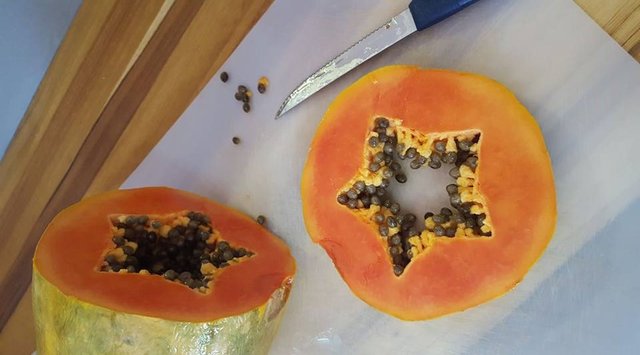
Cutting it you will find a myriad of small black spherical seeds, so numerous that it’s a shame to throw them away. In fact they also have beneficial properties for liver and intestine: there are studies that prove their effectiveness in the treatment of intestinal bacteria and parasites. In addition to this, seeds seem to be magical: wherever they fall, they give life to a new plant that in less than a year is ready to produce: after the first flowers, that are small, white and fragrant, it begins a continuous cycle in which inflorescence and fruits follow each other, giving abundant crops and specimens of several kilograms.
The trees in our garden were born where they decided themselves. We have on several occasions bought ornamental and fruit plants to beautify the property or create new areas of shade: once planted, we have added some compost we produce with our vegetable waste. The result? Not even one of the new arrivals took root, but on the other hand, the papaya seeds contained in the natural fertiliser took over and gave life to lush trees!
Mango
Mango is sublime. A taste that is a mix of peach, orange and pineapple, according to many. Its tree is majestic, with thick fronds of long leaves light or dark green and is widely spread throughout the country.
In Panama the season in which it produces goes from mid-April to late June, normally: every tree, in good years, generates thousands of fruits, an incredible abundance for which every family that has a tree in the garden will give you in quantity if only you will ask to taste one. Even in this case, given the huge diffusion of mangos among the native population, it is difficult to find local varieties in supermarkets, but only some commercial quality imported from abroad. Mango has a large and flat central core, which does not make the cut very simple: there are various examples on the net on how to proceed so as not to waste the delicious pulp, like here.
Coconut

Coconut is the exotic fruit par excellence, whose trees, the famous palms, are the backdrop to the most classic images of sunny tropical beaches. The nuts, falling from the top when ripe, if left on the ground give life to new plants.
Be careful not to be in the immediate vicinity at that moment!
The coconut is also sadly known for its legendary killer fame, according to which 150 people would die each year affected by its fall. They are probably not real data, but it is very dangerous to lie under a palm tree full of fruits, considering their weight and size.
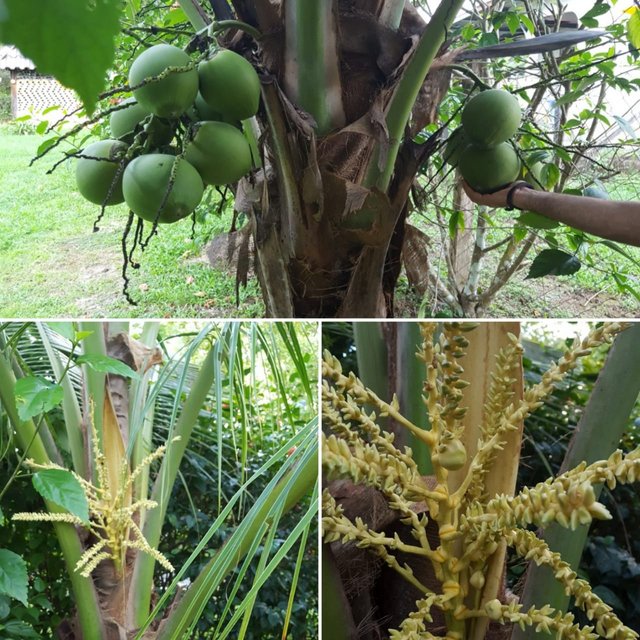
The nut is composed of a massive outer skin, a very thick and fibrous wrapper, which can have different colours including yellow, green and brown and that covers the hard woody shell, the only one that remains when it is marketed and exported.
Locally, instead, you will find mainly the whole coconut because the traditional way to consume it is to drink its portentous water: the fruit is picked at a first state of maturation in which the internal pulp is just a thin and soft transparent layer and the most of the product is in a liquid state. Left to "age" a few more months, the sugary water turns into the hard white milk pulp we all know. It is from this last state that the famous oil that can be used in the gastronomic and cosmetic field is obtained. Mixing the grated pulp with some hot water instead you will have a delicious coconut milk.
With this I conclude the roundup on the most popular tropical fruits. In the next article we will go to know some other less known.
All the pictures in this post are my property
Source:
http://powo.science.kew.org/taxon/urn:lsid:ipni.org:names:12322-2#uses
http://www.lastampa.it/2013/03/11/scienza/papaya-il-dolce-frutto-che-combatte-le-malattie-BsbBWn0D05SSJ6BKPrYchP/pagina.html
http://www.infoagro.com/frutas/frutas_tropicales/coco.htm

ITALIANO
Ciao a tutti, il mio primo post sui rettili di Panama, nato per caso, mi ha ricordato quanto sia fortunata di poter vivere ogni giorno dentro ad un documentario continuo.
Basta affacciarmi alla finestra di casa e la vita pullula, un tripudio di colori, suoni e odori.
I panamensi sono molto fieri e orgogliosi del loro paese e pensano sia benedetto da Dio: come biasimarli d'altronde, quando il nome stesso significa abbondanza e le favorevoli condizioni climatiche unite alla strategica posizione geografica creano una biodiversità come poche altre al mondo. Cercherò quindi di farvi scoprire parte di essa, attraverso articoli che racconteranno prevalentemente quello che ho visto e vissuto personalmente in questi anni di vita a Panama.
Questo post, in particolare, è dedicato ai frutti tropicali: alcuni saranno delle sorprese, altri li conoscerete già, ma vi segnalerò qualche particolarità che magari vi sfugge.
Partiamo dai più noti.
Una premessa banale ma doverosa: tutta la frutta è molto più buona se mangiata in loco! Questo, per chi visita un paese tropicale per la prima volta, è una vera sorpresa: quasi tutto, anche la frutta che conosciamo, come ad esempio ananas e banane, ha un sapore differente per noi che veniamo da altre latitudini.
Spesso scopriamo di apprezzare il gusto di frutti che mangiati in luoghi dove non sono autoctoni invece fanno pietà. Ricordo, ad esempio, di aver assaggiato il frutto della passione in Italia, importato da chissà dove e di averlo trovato pessimo. Mangiato invece nei paesi da cui proviene, ha davvero tutto un altro sapore.
Ananas
Chiamata piña in spagnolo, perché assomiglia alle pigna delle conifere specialmente durante l’infiorescenza, l’ananas è uno dei frutti più coltivati, esportati e consumati. Ciò che molti non conoscono è la pianta di questo frutto: bassa, con foglie strette ed allungate a formare ciò che in botanica è definito “rosetta”: il frutto si sviluppa al centro di essa.
Normalmente il primo raccolto si ottiene dopo 2 anni e i successivi dopo 12 mesi e sempre una sola ananas per volta!
Per quanto riguarda la riproduzione della specie, dalla pianta madre può nascerne lateralmente una nuova che a sua volta produrrà un frutto, oppure conviene trapiantare il tipico ciuffo sulla cima dell’ananas.
Banana
Sebbene la maggior parte delle persone al mondo conosca un solo tipo di banana, in realtà ne esistono decine di varietà differenti, per forma, gusto e colore.
Qui viene chiamata in generale “guineo”.
La pianta sembra un albero ma in effetti non lo è. Al posto del classico tronco presenta uno pseudo fusto che, a seconda della razza e della fertilità del terreno può sfiorare i sette metri di altezza.
Al raggiungimento della maturità della pianta, una grande infiorescenza esce dal centro di essa al posto dell’ennesima foglia; aprendosi scopre man mano file di fiori femmina che diventeranno frutti e, soltanto alla fine, fiori maschi.

Ogni fusto(pseudo) genera un solo casco e poi muore, ma il rizoma continua a dare vita a “figli” laterali ad oltranza.
Tra i più gustosi e curiosi ve n’è uno che i panamensi identificano come primitivo, che produce banane piccole dalla buccia sottile e la polpa densa e giallognola. Quando si mangiano una tira l’altra, come fossero caramelle, data la loro dolcezza.
Il guineo morado, ha la buccia violacea ed è più dolce di una comune banana. Il guineo manzana invece ha un sapore più acido che ricorda la mela, da qui il suo nome.

Un altro banano che suscita curiosità è il cuadrado, il quale, come dice il nome stesso, ha una forma tozza e squadrata. Peccato non siano facili da trovare, se non direttamente nel giardino di chi ancora coltiva queste varietà. Nei negozi di frutta e verdura e nei supermercati troverete solo ed esclusivamente l’unica banana che viene commercializzata dalla grande distribuzione mondiale, la Cavendish; in qualche chiosco lungo la statale Panamericana e nei maggiori mercati alimentari potreste trovarne qualcuna di queste varietà a prezzi davvero incredibili.
Il cugino della banana è il platano: il suo frutto è generalmente più grande e viene consumato prevalentemente verde, quando ha una polpa dura e appiccicosa. Molti stranieri sono scettici riguardo la sua bontà, ma può essere veramente sfizioso se cucinato, in particolar modo fritto. Si tagliano pezzi spessi 4-5 cm che vengono poi schiacciati fino a diventare 1 cm circa, conosciuti come Patacones oppure tagliati a fette sottili a mo’ di chips. Il sapore ricorda molto le patatine confezionate. Se lasciato maturare, diventa dolciastro, ma nemmeno in questo caso risulta buono da mangiare crudo. Viene impiegato prevalentemente per preparare un contorno chiamato Platano en tentación in accompagnamento a riso e insalata nei piatti tipici a base di carne.
Papaya
.jpg)
La papaya è considerata uno dei più salutari tra i frutti esotici grazie alle sue proprietà benefiche per l’apparato gastrico e digerente, ma ahimè, la maggior parte delle persone che l’hanno assaggiata non la trovano gradevole. Questo perché sovente ai visitatori che la mangiano nei ristoranti viene offerta troppo matura, con una colorazione della polpa tendente al rosso, una consistenza molle e una profumazione non molto invitante.
La papaya è invece deliziosa, anche se non ha un gusto molto deciso. Quando la buccia diventa gialla e il frutto inizia a cedere sotto le dita è il momento giusto per sbucciarlo: la polpa sarà di un bell'arancione e di consistenza morbida ma ferma.

Tagliandola troverete una miriade di piccoli semi sferici neri, così numerosi che pare un peccato gettarli. In effetti anch'essi hanno delle proprietà benefiche per il fegato e l’intestino: esistono studi che provano la loro efficacia nel trattamento di batteri e parassiti intestinali.
Oltre a questo, i semi sembrano essere magici: ovunque cadano, danno vita a piantine che in meno di un anno crescono velocemente in altezza e iniziano la produzione: a differenza dei frutti visti in precedenza, il papayo, dopo la comparsa dei primi fiori, piccoli, bianchi e profumatissimi, inizia un ciclo continuo in cui si susseguono infiorescenze e frutti, dando raccolti abbondanti ed esemplari di svariati chilogrammi.
Gli alberi che si trovano nel nostro giardino sono nati dove hanno deciso loro stessi. Abbiamo in più occasioni comprato piante ornamentali e da frutto per abbellire la proprietà o creare nuove aree d’ombra: una volta piantate, abbiamo aggiunto del compost da noi prodotto con i nostri scarti vegetali.
Il risultato?
Nemmeno una delle nuove arrivate ha attecchito, ma in compenso, i semi di papaya contenuti nel fertilizzante naturale hanno preso il sopravvento e dato vita a rigogliosi alberi!
Mango
Il mango è sublime.
Un gusto che è un mix di pesca, arancio e ananas, secondo molti. Il suo albero è maestoso, con fronde fitte di foglie lunghe verde chiaro o scuro ed è largamente diffuso sul territorio nazionale.
A Panama la stagione in cui produce va da metà aprile a giugno inoltrato, normalmente: ogni albero, nelle annate buone, genera migliaia di frutti, una spropositata abbondanza per la quale ogni famiglia che ha un albero in giardino ve ne regalerà in quantità se solo chiederete di assaggiarne uno. Anche in questo caso, data l’ingente diffusione del mango tra la popolazione autoctona, difficilmente troverete nei supermercati le varietà locali, ma solo qualche qualità commerciale importata dall'estero.
Il mango ha un nocciolo centrale grande e piatto, che non rende semplicissimo il taglio: si trovano in rete vari esempi illustrati sul come procedere per non sprecarne la deliziosa polpa, come qui.
Cocco

Il cocco è il frutto esotico per eccellenza, i cui alberi, le famose palme, fanno da scenario alle più classiche immagini di assolate spiagge tropicali. Le noci, cadendo dall'alto a maturazione avvenuta, se lasciate al suolo danno vita a nuove piante. Attenzione a non trovarvi nelle immediate prossimità in quel momento!
Il cocco è infatti tristemente noto anche per la sua leggendaria fama di killer, secondo la quale 150 persone morirebbero ogni anno colpite dalla sua caduta. Probabilmente non sono dati reali, ma rimane molto pericoloso sdraiarsi sotto ad una palma carica di frutti, considerando il peso elevato e le dimensioni.

La noce è composta da una massiccia buccia esterna, un involucro molto spesso e fibroso, che può presentare differenti colorazioni tra cui giallo, verde e marrone e che ricopre il duro guscio legnoso, l’unico che rimane quando viene commercializzato ed esportato.
A livello locale, invece, il cocco si trova prevalentemente intero perché la tradizionale maniera di consumarlo è bere la sua portentosa acqua: il frutto viene colto ad un primo stato di maturazione in cui la polpa interna è solo un sottile e morbido strato trasparente e la maggior parte di prodotto è in stato liquido. Lasciato “invecchiare” qualche mese in più, l’acqua zuccherina si trasforma nella dura polpa bianco latte che tutti conosciamo. E’ da quest’ultimo stato che si ricava il celebre olio che può essere impiegato in ambito gastronomico e cosmetico. Frullando la polpa grattugiata con un po’ di acqua calda si prepara invece un delizioso latte di cocco.
Con questo concludo la carrellata sui frutti tropicali più conosciuti. Nel prossimo articolo andremo a conoscerne qualche altro meno noto.
Tutte le immagini di questo post sono di mia proprietà.
http://powo.science.kew.org/taxon/urn:lsid:ipni.org:names:12322-2#uses
http://www.lastampa.it/2013/03/11/scienza/papaya-il-dolce-frutto-che-combatte-le-malattie-BsbBWn0D05SSJ6BKPrYchP/pagina.html
http://www.infoagro.com/frutas/frutas_tropicales/coco.htm
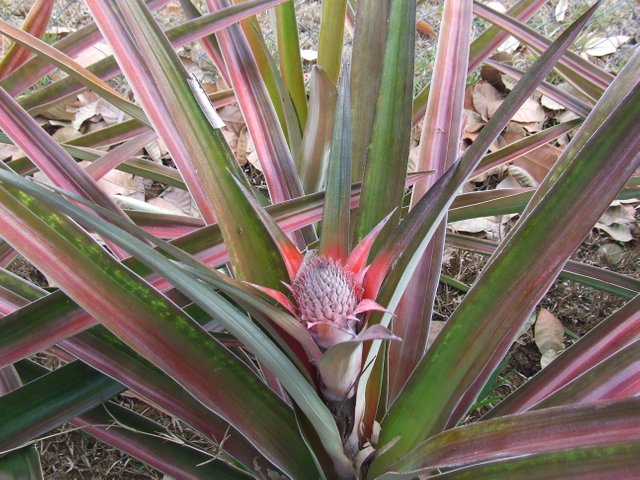
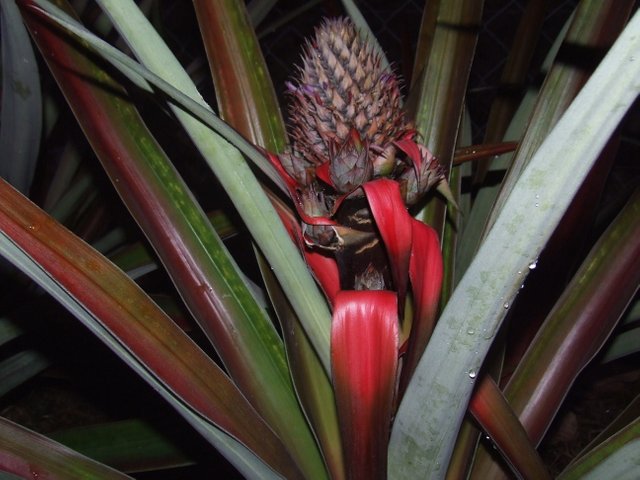
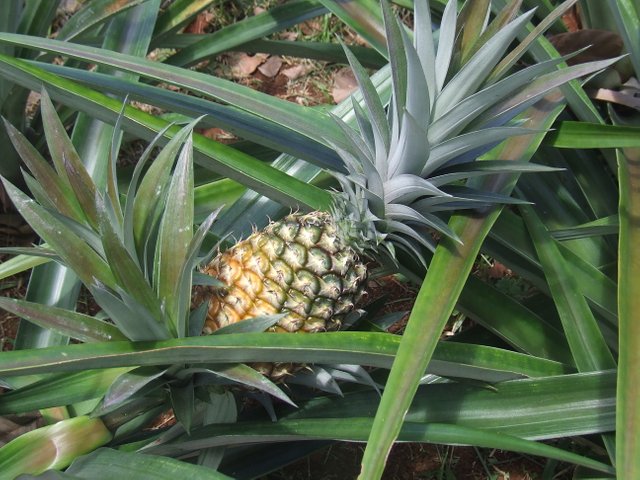
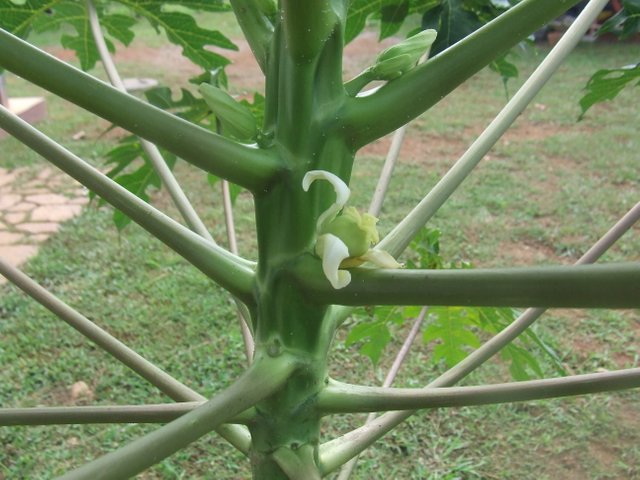
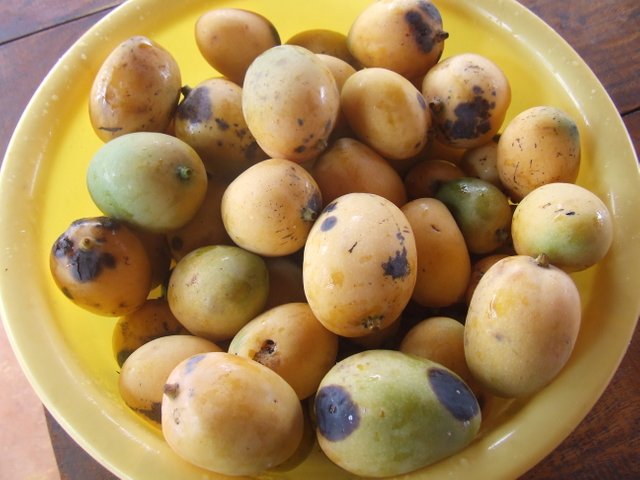
Dio che voglia di frutta che mi è venuta..ma di quella buona come quella che descrivi.Ho provato il platano e mi è piaciuto, ma come il Mango penso che non ci sia niente. Senza tenere conto di quanto costino da queste parti quelle prelibatezze che li' immagino ti tirano dietro con gli interessi ahahahah
Bello e interessante post! complimenti!
Grazie maestro, vienici a trovare che ti facciamo assaggiare delle chicche.
Cercherò di metterle nel prossimo post per il momento ;)
P.S. Occhio che il mango in spagnolo è pure un'altra cosa...
Lo sai che offrirmi simili inviti è molto pericoloso?
Perchè se per sbaglio dovessi davvero salire su un aereo che mi portasse oltreoceano ho dei fortissimi dubbi che salirei su quello di ritorno!!
Grazie comunque di cuore!
Fabio ha detto:"Ma che oh!" 😂😂
Dai, fai la valigia!
Congratulations @akireuna! You have completed the following achievement on Steemit and have been rewarded with new badge(s) :
Click on the badge to view your Board of Honor.
If you no longer want to receive notifications, reply to this comment with the word
STOPPost perfetto. Interessante, scorrevole e foto perfette di accompagnamento!
Grande! Bravissima!
Grazie pawpawpaw, sarebbe un peccato non condividere tutto questo materiale!
Posted using Partiko Android
Hai proprio ragione!!!
Grande Erika...
Mi hai fatto venire l'acquolina in bocca, la penso come te, meglio assaggiare le prelibatezze locali sul posto. Bellissima l'ananas piccola sembra tutt altra cosa, e poi non sapevo che la pianta ne producesse un solo frutto alla volta, fa un lavoraccio!
Grazie Michela! Cosa intendi per ananas piccola? Quando inizia crescere il frutto? Perché in effetti c'è anche una mini ananas ornamentale, grande quanto una ciliegia. Ora ti cerco la foto
Posted using Partiko Android
Si intendevo quella che iniza a crescere, la prima foto che hai postato.
No, ma dai un ananas in minatura se grande quanto una ciliegia. Incredibile la natura!
Eccola! Vabbè, col ciuffo è più grande
È troppo carina! Che cosa incredibile! Hai mai provato ad aprirla per vedere come é?
No, il ciuffo punge di brutto, non ti puoi avvicinare. E poi ne ho avute solo un paio in tutto questo tempo, sono delicate e le ho tenute fino a quando hanno retto. Poi sono seccate o marcite :(
Posted using Partiko Android
Mmmh il MANGO, il miglior frutto in assoluto!
Vero, seppure io non mangi la pesca, adoro il mango! Quest'anno ce lo siamo persi!
Posted using Partiko Android
Congratulations @akireuna! You have completed the following achievement on Steemit and have been rewarded with new badge(s) :
Click on the badge to view your Board of Honor.
If you no longer want to receive notifications, reply to this comment with the word
STOPTutta questa ottima frutta ripaga senz'altro della presenza dei serpenti! Questa e' una vera fortuna! Complimenti x l'ottimo post!
Ahahaha esatto! Ma c'è molto altro da scoprire ;) Grazie Misia1979
Posted using Partiko Android
This post has been voted on by the steemstem curation team and voting trail.
There is more to SteemSTEM than just writing posts, check here for some more tips on being a community member. You can also join our discord here to get to know the rest of the community!
Show time! Grandiosa! A dir poco eccellente come post!.. quanta bella ed ottima frutta!😀🔝👏✌️
Posted using Partiko Android
Grazie dei complimenti! Nel prossimo ce ne sarà di meno conosciuta!
Posted using Partiko Android
Hi @akireuna!
Your post was upvoted by utopian.io in cooperation with steemstem - supporting knowledge, innovation and technological advancement on the Steem Blockchain.
Contribute to Open Source with utopian.io
Learn how to contribute on our website and join the new open source economy.
Want to chat? Join the Utopian Community on Discord https://discord.gg/h52nFrV